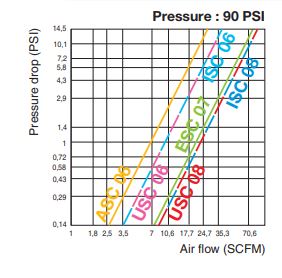
When you delve into looking into air fittings and different standards, sometimes it feels like you need a Phd to understand everything.
Lets decipher it once and for all, so the laymen can finally get a proper air setup:
Everything boils down to 7 high level parent ‘profiles’ (standards) these are:
Industrial (American standard)

Automotive fittings/Truflate (American Standard)
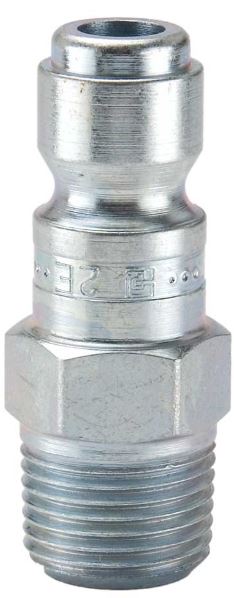
European standard (European standard)
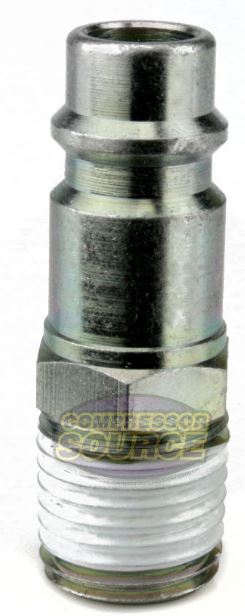
ARO 210 (American standard)
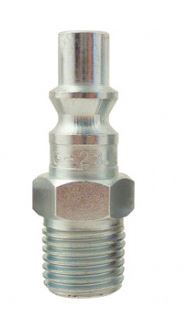
Japanese / Nitto (Japanese style)
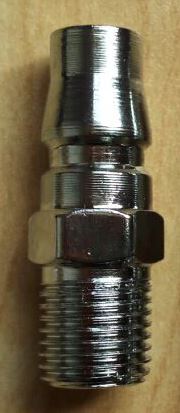
British standard (British Standard)

Lincoln Air fitting

Now see the threaded part? There are 4 standards for just those threads and they are:
NPT – National Pipe Taper
NPS – National Pipe Straight
BSPT – British Standard Pipe Taper
BSPP – British Standard Pipe Parallel
NPS is very rarely if ever used for air fittings so its just the other three that we have to worry about.
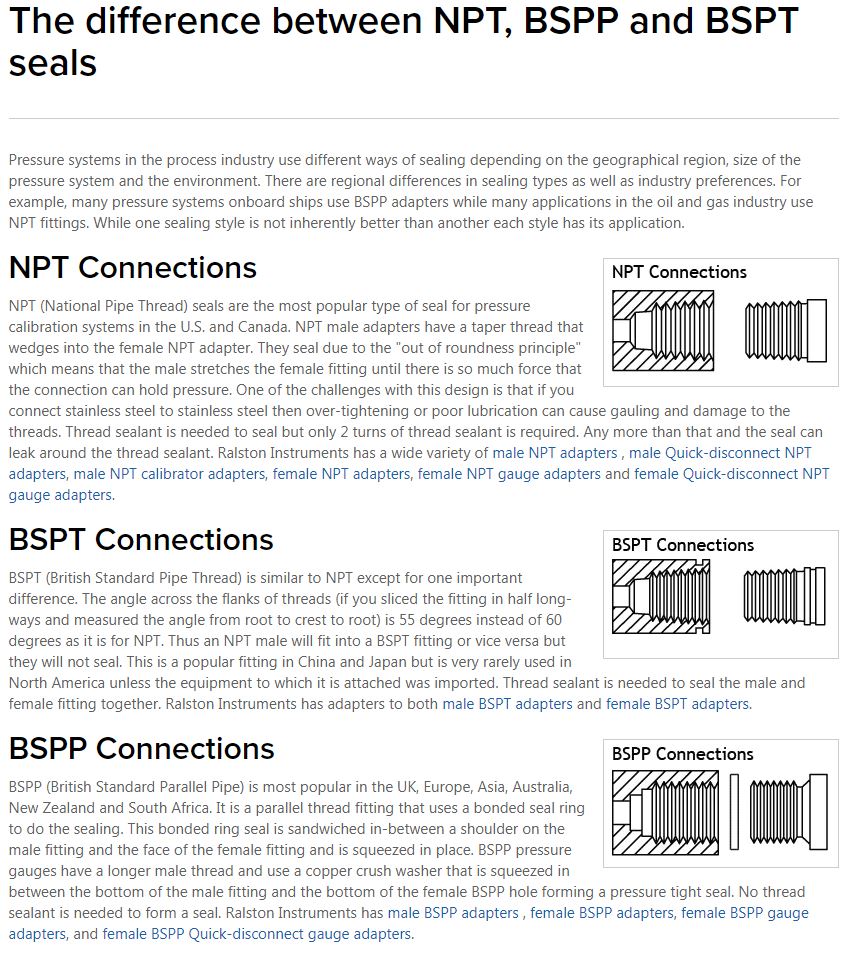
Confused yet?
Breath, we’ll make it.
Most air tools in North America have 1/4″ NPT threads in the tool.
North American Air hoses can be purchased in these main sizes:
1/4 hose size with 1/4 NPT male fittings
3/8 hose size with 1/4 NPT male fittings
3/8 hose size with 3/8 NPT male fittings
1/2 hose size with 3/8 NPT male fittings
1/2 hose size with 1/2 NPT Male fittings
There are larger sizes, but those fall out of the scope of most people.
NPT size (or other thread type size) does not give an indication of the inner diameter of the flow hole!
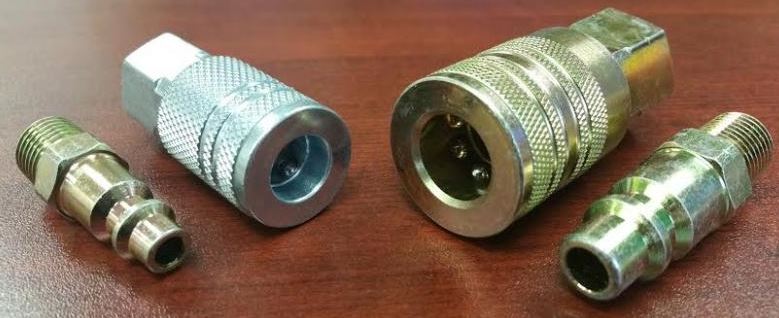
There are different inner diameter “body sizes”: normally 1/4″, 3/8″ and 1/2″. These body sizes indicate flow hole size.
So lets bring it all together now.
We have the body size, the thread type, the thread size, and finally the plug type.
The ‘body size’ has to match between the connecting part of the coupler and fitting. While the threaded parts between the hose and the fittings have to match.
Blue needs to match blue (threads and thread type), and body sizes need to match (orange to orange, or green to green, but not orange to green).
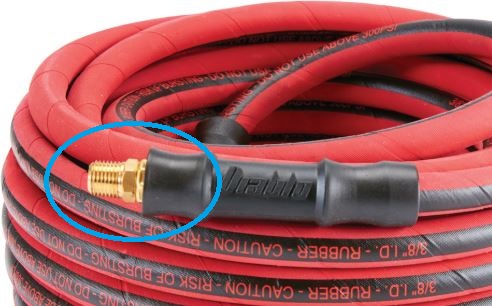
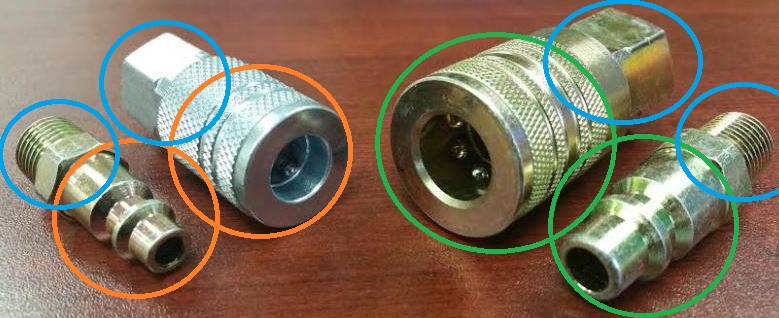
In this example the hose is 3/8, with a 1/4 NPT threaded end; which would accept either of the orange 1/4 or green 3/8 body because the threaded blue NPT on the bodies is 1/4.
In this example, the hose would not accept a 3/8 body with 3/8 NPT (not pictured)! Remember, the threaded size does not always equate to the body size.
If your fitting or coupler was 3/8 NPT and 3/8 Body size, your hose would need to have a 3/8 NPT fitting (or adapter) regardless of the hose size.
Try browsing this Prevost catalog, does it make sense now why there are different body sizes and NPT options? *The colors I used above have nothing to do with the color system Prevost uses in their catalog
Choose one standard and stick with it, thats the idea here, don’t mix and match.
Everyone will have their own needs, however for North America for automotive air tools I would recommend:
NPT thread type – Almost all air tools in NA will be NPT
Match NPT size to tool inlet size – vast majority of air tools will be 1/4 NPT
3/8 body size with 1/4 NPT into 3/8 hose with 1/4 NPT end – 3/8 body sizing will give you a higher flow rate (read power) by a significant margin over 1/4 body.
Fitting ‘profile’ (Standard) – in 3/8 body size Truflate and Industrial flow the most, with the European being a close second.
Red/ dark blue indicating Truflate and industrial, green indicating the European standard:

There is no difference between going Truflate and Industrial flow wise other then the environment you work in. If you work in a auto garage where you need to share tools its likely that your coworkers have tools with Truflate fittings, and vice versa in industrial work places.
If this is for home use, just pick one, and get a 10 or 20 pack of fittings in that one standard, it shouldn’t cost more than 20-30 dollars for all the fittings.
My personal setup is a 3/8 hose, with 1/4 NPT ends, the ends are mated to 3/8 body 1/4 NPT European couplers, and the tools are fitted with European 3/8 body fittings with 1/4 NPT threads. I got a deal on the European fittings; otherwise I would have gone with Truflate fittings. In my situation it doesn’t matter much because its being used in my personal garage where no sharing is going on.
A note about couplers:
Most every profile (standard) has its own coupler thats not interchangeable. The couplers normally have 1 line cut in indicating only 1 standard is applicable.
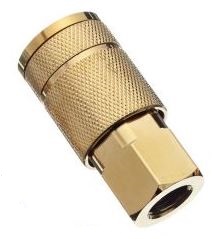
There are universal couplers that have three lines indicated either in paint or by 3 groves indicating that 3 standards will interchange with the coupler. Normally these can accept Industrial, Truflate and ARO.
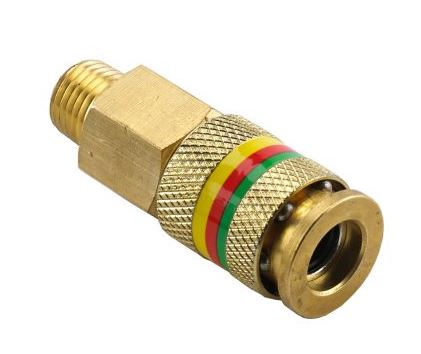
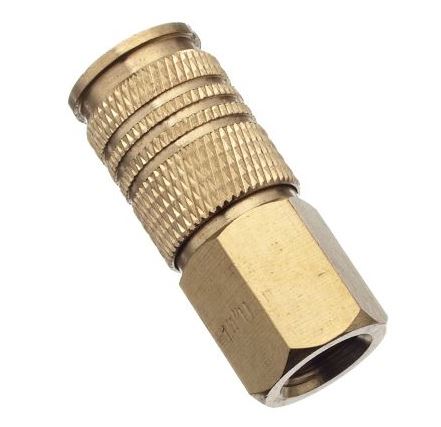

very well explained. thankyou for sharing it. i believe it is really important from where you are getting the stuff. you can know everything about it but still fail to get the right product. Quality really matters matters. I always go for Utah Pneumatic for air filter regulator and any other pneumatic shopping. They are an online business and provides with the best products in reasonable rates. I am attaching their link in case any one is interested.
https://utahpneumatic.com/
The one thing no one seems to cover is how the coupler seal works. Does the tip of the male fitting push against the female seal or does the male slip inside of the female seal. This is where most leaks happen. I use the Lincoln style because an old mechanic convinced me they don’t leak. I’ve never had a leak but they sure are expensive. Are Lincoln’s double sealed? Is there an advantage to the automotive style with such a short tip on the male fitting. Seems like they would be more apt to leaking.
I have a die grinder 1/2-20 bolt thread what size air coupler do I need